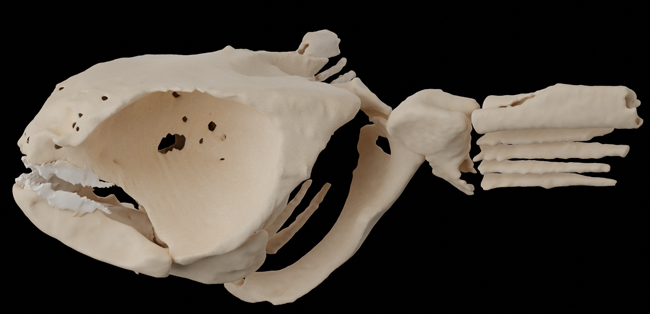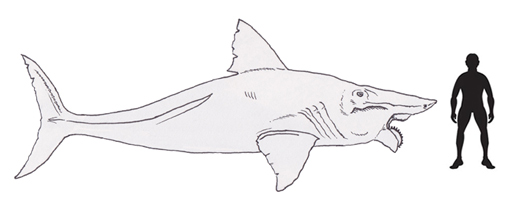Carboniferous chimaeras were suction feeders unlike their modern relatives such as the rat fish which are durophagous (feed on hard-shelled prey such as crabs, snails and molluscs). That is the conclusion of new research published this week in the academic journal The Proceedings of the National Academy of Sciences (PNAS).
An Exceptional Three-dimensional Fossil
The research led by the Muséum national d’histoire naturelle (MNHN) located in Paris, and the University of Birmingham has shown that an ancient relative of chimaeras, jawed vertebrates that are related to cartilaginous fishes (sharks and rays), fed by sucking in prey animals underwater.
An exceptional three-dimensional fossil of an ancient chimaera (Iniopera genus), has revealed new clues about the diversity of these creatures during the Carboniferous period.

Carboniferous Chimaera
The fossil, from a genus called Iniopera, is the only suction feeder to be identified among chimaeras, and quite different from living chimaeras, which generally feed by crushing molluscs and other hard-shelled prey between their teeth.
Chimaeriformes are an ancient order of cartilaginous fish (Chondrichthyes) that are thought to have evolved in the Devonian. Most extant species are found at depths greater than two hundred metres, and some chimaera fish are restricted to extremely deep water (Bathypelagic Zone).
Most fossil and extant chimaeras are quite small, very few specimens exceed one metre in length. However, other prehistoric, cartilaginous fish that were distantly related to Iniopera grew much larger. For example, the Permian genus Helicoprion with its bizarre tooth-whorl jaw, which has been estimated to have grown to around eight metres in length.

Picture credit: Everything Dinosaur
Although models of prehistoric fish from the Chondrichthyes Class are rare, PNSO have included two prehistoric shark figures (O. megalodon and Cretoxyrhina) and a replica of Helicoprion.
To view the PNSO prehistoric animal model range in stock at Everything Dinosaur: PNSO Age of Dinosaurs Models and Figures.
Identifying a Suction Feeder
Commenting on the significance of this study, lead researcher Dr Richard Dearden (University of Birmingham) stated:
“Being able to identify Iniopera as a suction feeder sheds light on the diverse role of chimaeras in these early ecosystems. In particular, it suggests that in their early evolutionary history, some chimaeras were inhabiting ecological niches that are now monopolised by ray finned fishes – a far cry from their modern life as specialised shell-crushers.”
The cartilage skeleton of these fish are rarely fossilised and the Chondrichthyes tend to be underrepresented in the fossil record. The skeletons that are preserved tend to be crushed flat and distorted so interpreting them is notoriously difficult. However, by studying the tooth shapes and diverse body plans, palaeontologists were already aware that extinct forms were far more varied than their living counterparts.
3-D Imaging Techniques
Using advanced 3-D imaging techniques, the researchers reconstructed the head, shoulder and throat skeleton of the Iniopera fossil. They then estimated the location of major muscles and found the anatomy was poorly suited to durophagous feeding. Instead, the researchers believe the animal was more likely to have used the muscle arrangement to expand the throat to take in water and a forward-pointing mouth to orient towards prey.
Suction feeding is a technique used by many animals that live underwater. It involves generating low pressures in the throat to pull in water and prey. To do this effectively, the animal needs to be able to rapidly expand its throat, and point its mouth forward towards prey items. Numerous different aquatic jawed vertebrates, such as ray-finned fishes and some turtles have evolved specialised anatomies to help them feed in this manner more effectively.
The suction feeding theory is also supported by fossilised Chimaeriformes that have preserved stomach contents. Small arthropods have been found in association with the body cavity of several specimens and their relatively entire state suggests suction feeding as the method of prey capture.
Everything Dinosaur acknowledges the assistance of a media release from the University of Birmingham in the compilation of this article.






Leave A Comment